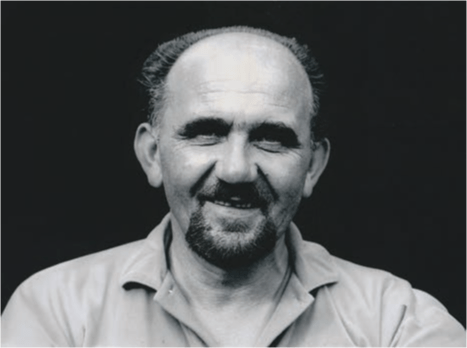Dr Grigor ‘George’ Borys DVM (Hannover)

George was a post-WWII Ukrainian immigrant and possessed little more than a suitcase when he arrived in Melbourne in 1948 aboard the ship Protea. He was a graduate of the elite ‘University of Veterinary Medicine’ Hannover, established in 1778. George’s veterinary qualifications and that of his Ukrainian Hannoverian colleagues Dr. Theo Tomashek, Dr. Eugene Baranowski, and Dr. Roman Mykytovych were not recognised at that time in Australia. George was sent to Bonegilla Training Centre in Victoria and then seconded to the Metropolitan Water Sewerage and Drainage Board in Regents Park, Sydney. Under the displaced persons scheme, he was required to pay for his passage to Australia. There, George lived in a tent and studied English, including the specialised vocabulary required for a veterinary surgeon, complementing his existing knowledge of Ukrainian, Polish, and German. Significantly, his father was also a veterinarian.
Although George had few material possessions, his skills, intellect, and enthusiasm soon saw him working under contract for a veterinarian in Singleton. There, in 1949, he married Milada, a talented, spirited Czechoslovakian refugee who arrived in Walsh Bay, Sydney, aboard the Charlton Sovereign in 1948. Milada was placed in Bathurst Immigration and Training Centre at Kelso. She was then employed by the Department of Health at Narrogin, Western Australia. In 1952, a special NSW veterinary exam had to be legislated and passed before George and his European colleagues could practice in Australia. George and Milada were at the centre of this. Milada was politically active, and her letters to state and federal politicians then, and in the future, were very persuasive and just.
George and Milada registered their large animal veterinary practice in 1953 and began a lifetime of service and fellowship in the Berry community. George was a dedicated and enterprising veterinarian. His expertise in artificial insemination and infertility in cattle was invaluable to all Australian farmers. George was collecting and freezing semen well before Graham Park existed, and his knowledge was considered when establishing Graham Park in Berry. His skill and “give it a go” attitude were evidenced when he collected semen from Austral Park Stud’s old and arthritic champion Jersey bull, ‘Tolgarth Sams Illuminator NZ.’ He had the samples frozen and later inseminated their cows successfully—cutting-edge veterinary science.
George was on call 24/7 via his two-way wireless radio, and Milada was his secretary, nurse, and receptionist. He produced his own, well-regarded veterinary medicines and treatments. George, driving his Citroën and wearing his trademark beret on the way to a case, was a familiar sight, and George became a loved and respected unique Berry local. George’s imagination and creativity are evident in the house he and Milada built in Queen Street, which also included a large pool and veterinary surgery. The house is an innovative, iconic, heritage-cited residence designed in a 1955 P&O liner style. There, George swam most days, worked out with his aptly named ‘Bullworker,’ played a mean game of chess, and with Milada raised three children: Ivana, Stephan, and Michael. In 1963, Ivana was the inaugural Miss Berry Showgirl.
George became the honorary veterinarian for the Berry Show and the Sydney Royal Easter Show. He continued to be at the forefront of veterinary medicine, contributing to herd health in the Berry region in the areas of TB testing, strain 19 (Brucellosis), footrot, calving problems, milk fever, surgery, and infertility. George later travelled to the USA and Europe to study the pioneering innovative technology of ovum transplantation in cattle. George and Milada came to Berry, made it their home, and significantly contributed to the rich and productive area which we have today. Berry Show is proud to have Dr. Grigor ‘George’ Borys as the 2025 Show Treasure. The Borys family gratefully acknowledge and thank the people of Berry, who supported and believed in ‘George.’
